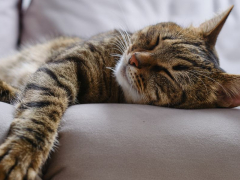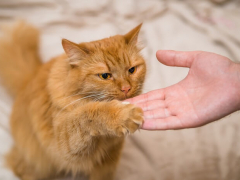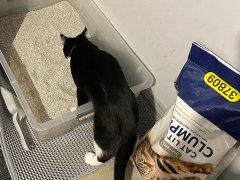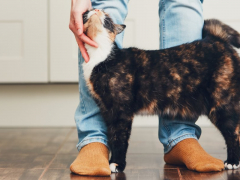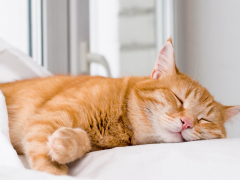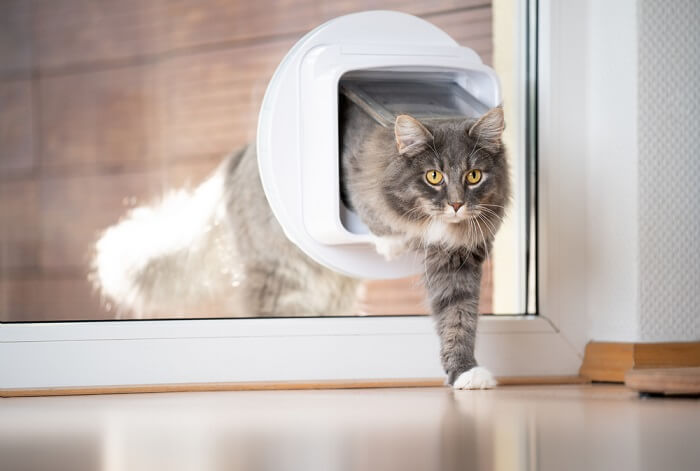
Cats like to explore the outside, as they get to roam, climb, hunt and patrol their territory.
For an indoor/outdoor cat using a pet door is a vital skill that a feline must acquire to provide them the independence to come back and go as they please furthermore it gives them the opportunity to protect their place at set times to reduce the chance of encountering other cats populating the same area.
Follow this easy step-by-step guide to learn how to train your cat to use a pet door!
Types of Cat Doors
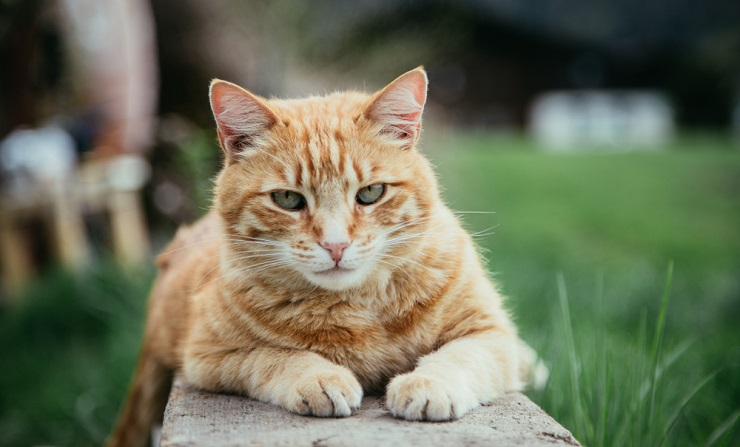
Choosing the proper cat door for your individual cat is important. Pay attention to sizing, functionality, durability together with suitability for multi-cat homes.
Certain cat flaps offer limited visual field outside or offer no visibility at all, translucent doors are beneficial since they encourage confidence when using the door.
The Sure Petcare Microchip Cat Flap is advantageous for multi-cat households, since it will lessen conflict between cats by providing an escape for a specific kitty from a stressful situation and bar unwanted visitors from coming into your home.
Whichever type of cat door you purchase, fit the cat door away from food, water, litter trays, and resting spots furthermore make sure the flap isn’t installed too high making it difficult for your feline to enter/exit.
Training Guidelines
Patience, consistency, persistence, and not losing your cool are key!
Props
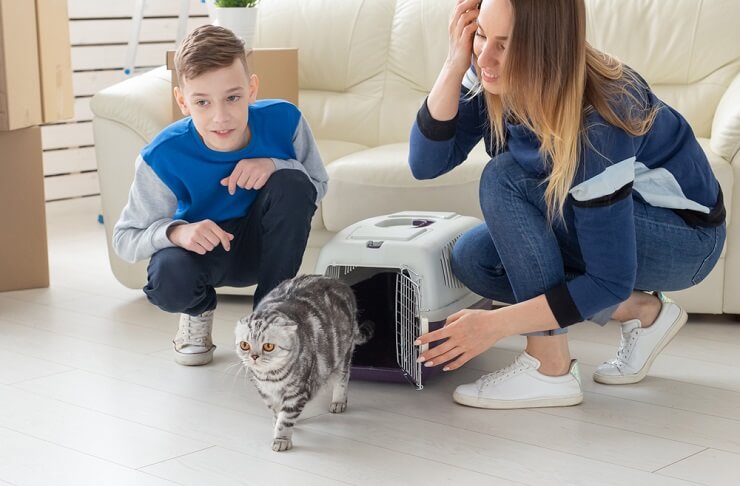
If your cat is clicker or target trained prepare all props, favourite treats, and treat bags before the training session.
Use Praise And Rewards
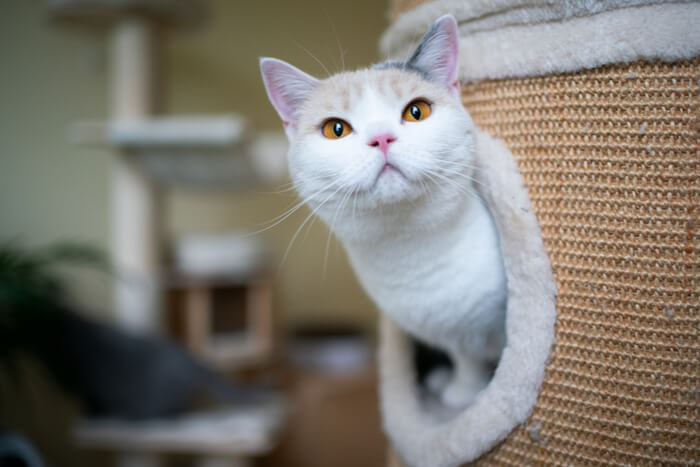
Cats like dogs react to positive reinforcement hence use praise, a favourite food reward or feather wand toy, and even a chin-rub after they achieve the desired behaviour. Never shout or punish your cat for not following your cue, instead have a break and try again another day.
Keep Training Sessions Short
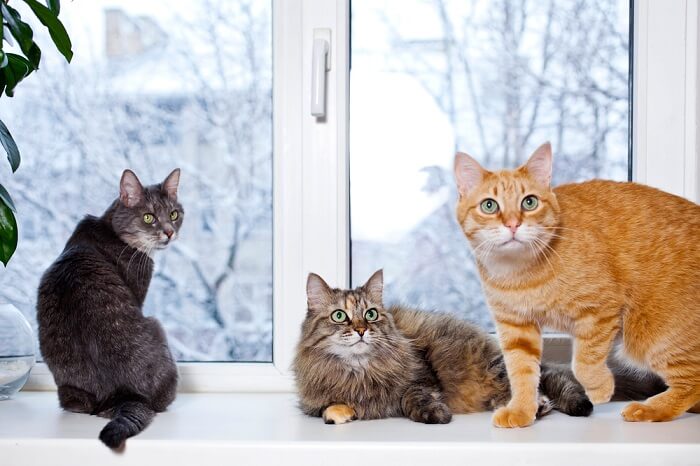
Training should be fun for both owner and cat, keep training sessions short but frequent, no more than 5 mins per day, adjust them to your cat’s individual mood.
Watch Body Language for Signs of Fatigue or Frustration
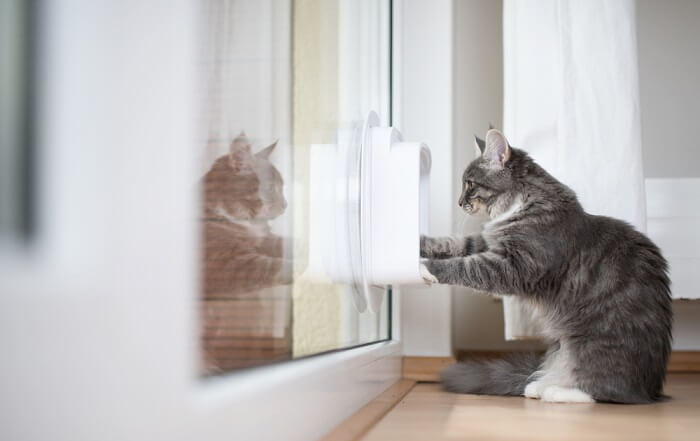
Watch your cat’s body language for signs of tiredness like not taking treats, getting distracted, and not completing the relevant task.
Similarly, look out for displacement actions (repetitive out-of-context behaviour) like nose licking, grooming their flanks or back, and yawning displayed out of context which can be indicative of anxiety and even frustration.
How To Train A Cat To Use A Pet Door Step-by-Step
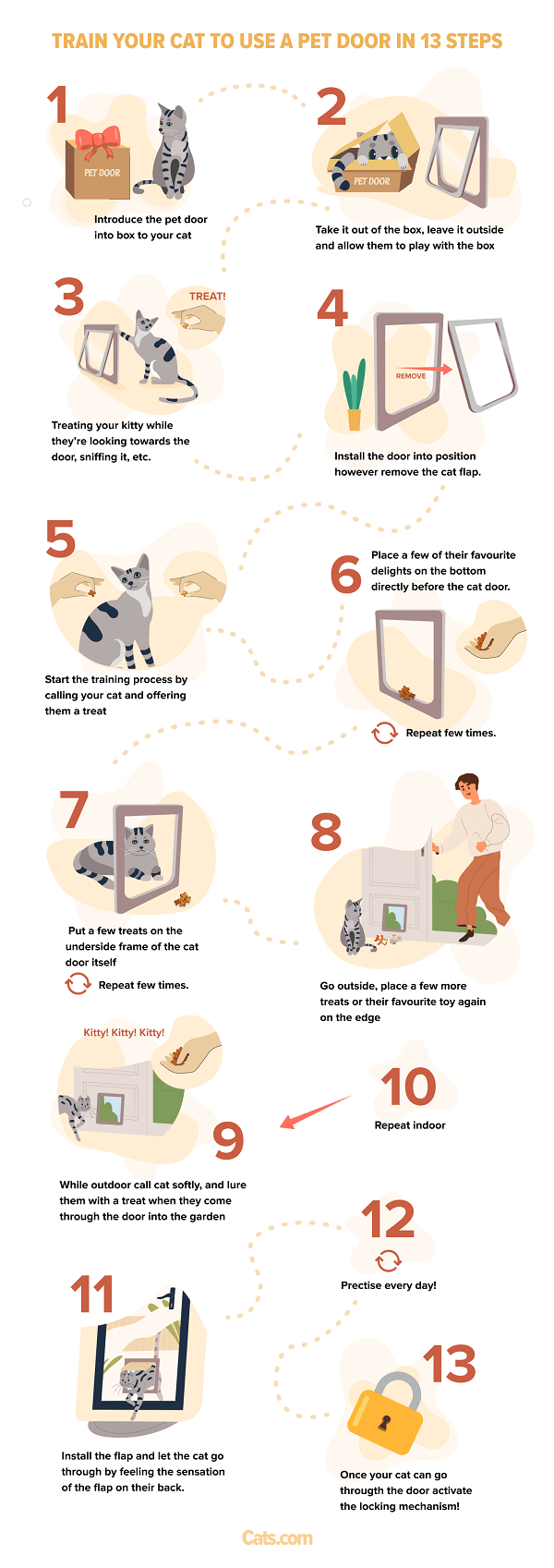
Train Your Cat to Use A Pet Door In 13 Steps
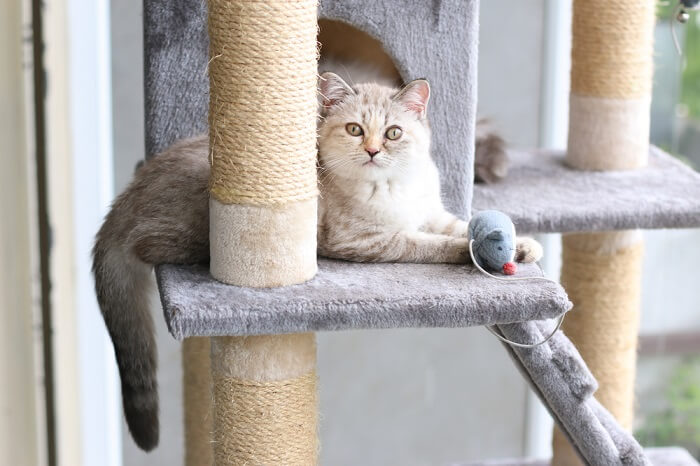
Step 1: Introduce the pet door to your cat while it’s still within the box.
Step 2: Take it out of the box, leave it outside and allow them to play with the box for few days.
Step 3: Build a positive association with the cat door by simply treating your kitty while they’re looking towards the door, sniffing it, rubbing their scent, interacting with it so forth.
Step 4: Install the door into position however remove the cat flap. If you’re unable to remove the flap, prop the door open with a peg, pencil, or tape, ensuring the ingress is wide open and doesn’t touch the cat’s back or gets the cat’s tail caught within the door.
Step 5: When it’s quiet at home and there aren’t any distractions start the training process by calling your cat and offering them a treat.
Step 6: Place a few of their favourite delights on the bottom directly before the cat door. Repeat a few times.
Step 7: Put a few treats on the underside frame of the cat door itself and encourage eating, repeat several times, and praise your cat.
Step 8: Once your cat is comfortable consuming treats from the frame, go outside or ask a friend to assist (leave your cat indoors), place a few more treats or their favourite toy again on the edge.
Step 9: While outdoors, step slightly away from the cat door (don’t block the cats outside view), call them softly, and lure them with a treat or a toy when they come through the door into the garden/deck.
Step 10: When your cat is outside, return indoors and repeat step 9 by calling them towards you, again reward with a treat or playtime. Leave the flap propped open for a few days, encouraging your cat back and forth using treats, toys, and lots of praise.
Step 11: Once your cat is fully confident exiting/entering through the open gap, install the flap and progressively drop it down and prop the door less wide open, let the cat go through by feeling the sensation of the flap on their back. Reward with a treat or playtime as they exit and enter.
Step 12: Practice daily with the flap lowered or closed with lots of encouragement and treats.
Step 13: Once your cat is often gaining access through the fully closed flap, activate the locking mechanism.
Training Tips And Tricks
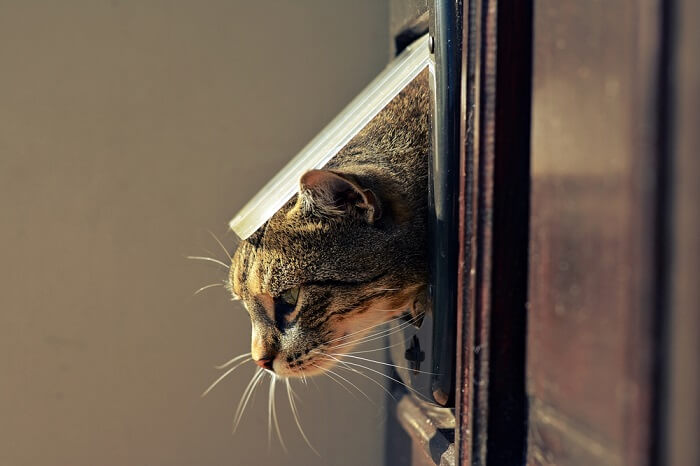
Don’t physically pick up your cat and place them through the gap, since that will create fear and a negative association with the flap,
If you have a fearful or nervous kitty, cut out a hole inside a cardboard box and attach a cling film which simulates a flap as seen during this training video, let your cat go back and forth through the cavity to boost their confidence before the actual install.
For scaredy cats, replace the flap with a cling film or light cloth during the training phase.
Don’t physically pick up your cat and place them through the gap since that will create fear plus a negative association with the flap.
To help a feline feel safer from potential fears when exiting a door that has a limited field of vision of the outside is to feature privacy with potted plants directly next to the egress to enable your moggie to remain hidden while evaluating the garden for safety.
Attach a cat flap step for arthritic cats. Pet steps or a ramp may be added to an entry and down the opposite side to enhance accessibility for older cats.
If you tried all kinds of techniques and your cat remains afraid or refuses to use the cat flap, leave a window or door ajar, just make sure your cat can’t be trapped or shut without anyone realising.
Conclusion

Careful consideration should be made before installation and training in the use of a pet door, since it may be a positive addition to your home while it may similarly represent a security breach and trigger redirected aggression towards another cat if other animals can enter the house.
Overall a pet door provides your feline with both mental and physical stimulation together with the freedom to explore the planet on their own terms.
Frequently Asked Questions
How long does it take for a cat to get used to a cat flap?
Most confident outgoing cats take to it naturally while fearful, anxious or those who had a negative experience may be hesitant initially, however with the proper training and motivation they’ll enjoy boundless opportunities to express their natural adventuresome behaviour in a week’s time.
Is it hard to teach a cat to use a cat door?
It’s not hard to train a cat to use a cat door with a bit of patience. The trick is to let your cat get comfortable with the cat door without the flap encouraging back and forth use with the help of treats, herbs, catnip or toys.
Can you teach a cat to use a doggie door?
Doggie doors are usually larger than cat doors making them easier to train a cat to use plus when your cat sees the dog already utilizing it, they’ll just mimic the dog’s behaviour following them into the garden. If your cat is little hesitant entice them with treats or praise.
-
Atkinson, T. (2018). Practical Feline Behaviour. Wallingford, Oxfordshire, UK: CABI. Retrieved September 05, 2021
-
Care, I. C. (2020, Septmeber 15). Advanced Feline Behaviour for Vet Professionals, Module 5 Creating a Cat Friendly Home Part 1 and 2. (ISFM, Compiler) UK. Retrieved September 08, 2021

